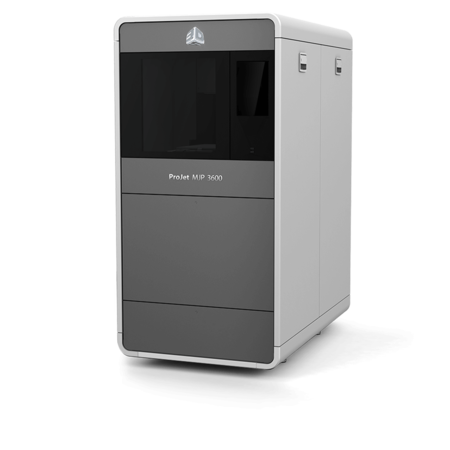“The ProJet Multi Jet Printer (MJP) Has Helped Us Achieve Better, More Innovative Products Faster, While Also Giving Us More Time to Refine and Improve Our Designs.”
Since 1925, the stamps of Shachihata, Inc. have been making their mark on the face of the workplace for nearly 90 years. With Shachihata’s introduction of the self-inking “Mannen Stamp Pad” and the ink pad-free “XStamper”, this Japanese company has made product design and innovation its highest priorities over the years as it seeks to creatively and ecologically support customers’ needs. With top craftsmanship at the center of its development goals, Shachihata incorporated 3D printing into its workflow in 2007 and most recently adopted the ProJet® MJP 3D Printer by 3D Systems, enhancing the overall process and product.
According to Taketoshi Ota of the Product Development Department, Shachihata initially explored 3D printing when it realized it was “the newest tool to support the shortening of the production period.” This was especially relevant to Shachihata at the time because the company was trying to agilely make itself available to overseas expansion and more diversified products. As the company has grown with its 3D printers, Shachihata has not only halved the time from planning to product sales but has improved product quality and boosted design and innovation creativity.
Shachihata’s focus has historically been on stamps and stationary products for domestic office use. However, the flexible capabilities opened up by 3D printers enabled the company to expand development into products for foreign markets as well as for individual customers. The transition from hand drawings to digital 2D/3D CAD that was part of this expansion has proven to be particularly helpful in accelerating design modifications and shortening development periods. When Shachihata added a 3D printer of its own, the company was also able to bring prototyping in-house, which translated week-long delays for inspection models into overnight results.
When the lease on the initial 3D printer expired, Shachihata re-examined the 3D printers on the market. Though the advantages of 3D printing as a technology span the industry, the particulars of the Multi Jet Printer stood out to Shachihata. This printer uses Multi-Jet modeling technology to deliver robust, durable, high-quality plastic parts using UV-curable plastic materials with accuracies of 0.025 – 0.05 mm per inch of part dimension. This model includes a High-Speed printing mode and an expanded print envelope compared to other models in the range, affording large total part size. Support materials are formed out of easily-removed wax. In addition to considerations in precision, pricing, and size, Shachihata was drawn to the ProJet’s support removal process, which promised a vast improvement over its then-current technique.
Depending on the geometry of a 3D printed part, the ProJet MJP uses two materials at once; one to create the main piece and one to support it. Supports allow material to be deposited where gravity would otherwise present an obstacle. Once the part is built, supports are removed to yield the final piece. The support removal process for the 3D printers Shachihata used in the past required a preliminary dip of the piece into a chemical solution, followed by water-jetting to tear off the remaining pieces. This was not only time-intensive, but it wasn’t always effective in removing supports from enclosed structures. Not to mention, the force of the water jet sometimes damaged delicate parts.
The ProJet MJP, in contrast, uses durable VisiJet® materials with a wax support material that can be completely and cleanly removed in an oven that melts and drains the wax. Because the oven process requires no additional oversight or effort, time that Shachihata traditionally invested in support removal can now be repurposed for greater productivity overall. The ProJet MJP's net build volume of 11.75 x 7.3 x 8 inches makes it a compact and efficient workshop choice.
In addition to speeding up Shachihata’s development process, 3D printing has made it possible for the company to plan more details of their final product during the design phase to make production more efficient. The speed of design production has also made the company more adventurous and experimental because time is no longer lost waiting for outsourced prototypes. With prototyping hesitation stayed, Shachihata is now able to make more novelty goods and to even use prints as presentation tools, allowing its audience to physically turn over the concepts the company wishes to share.
“The printer has helped us achieve better, more innovative products faster, while also giving us more time to refine and improve our designs,” said Yukihiko Shibagaki, General Manager of Shachihata’s Product Development Department. “We look forward to exploring and expanding our ProJet’s uses as we continually strive to better serve our products and customers.”
